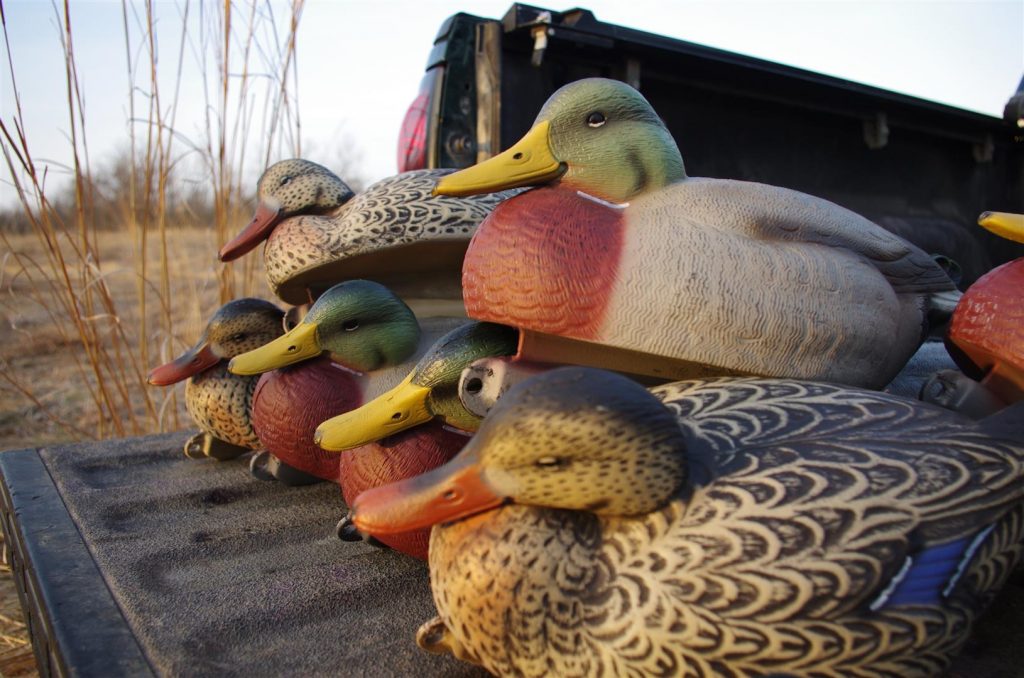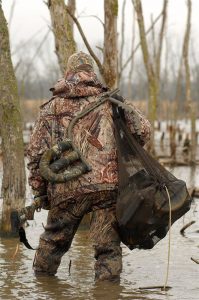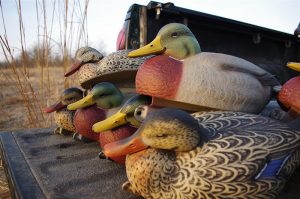You may also be interested in:
https://www.letsgohunting.org/resources/articles/game-birds/a-public-lands-waterfowling-master-plan/
https://www.letsgohunting.org/resources/articles/game-birds/waterfowl-hunting-gear-guide/
https://www.letsgohunting.org/resources/articles/explore-hunting/conservation-organizations-to-know/
https://www.letsgohunting.org/resources/articles/recipes/wild-goose-and-pineapple-stir-fry/
ARTICLES

A Public Lands Waterfowling Master Plan
If you’re a waterfowl hunter and not one of those lucky guys who can afford to belong to a private club or hire an outfitter every time you want to go out, more than likely that means you’ll be hunting at least some of the time on public refuge areas.
The National Wildlife Refuge System is a designation for certain protected areas of the United States managed by the U.S. Fish & Wildlife Service and set aside to conserve America’s fish, wildlife and plants. There are lots of these areas nationwide, in fact there now more than 370 national wildlife refuges on which hunting—for everything from turkey and deer to small game and ducks—is allowed.
I cut my waterfowl hunting teeth on many of the refuges in the Pacific Flyway (there are four management flyways in the U.S., Atlantic, Mississippi, Central and Pacific). I’ve had some spectacular hunting on them, and you can too.
Success and Public Waterfowl
In hunting, luck plays a part in the outcome. But I believe to a large degree you can make your own luck. Here are some crucial considerations when planning a refuge duck hunt.
Timing—Because most people work Monday through Friday and hunt weekends, you’ll generally find much less pressure on the refuges mid-week. If you have to hunt weekends, try and shy away from the holiday weekends such as Veteran’s Day, Thanksgiving, Christmas, etc. Also, if you get out at dawn and don’t limit out early, do not be afraid to sit all day. Often you’ll experience a short burst of mid-morning flight activity as most hunters pick up and leave a bit before noon, then again as arriving afternoon hunters push birds around.
Scouting—Just as it is with big-game, in-depth scouting is critical to success. If you have little experience on a specific refuge, try and make a trip or two there before the season just to get a feel for it. If you cannot do this, there are two things you can do to maximize your chances of pulling the trigger.

On many refuges, the only “blind” you’ll have is what Mother Nature provides. Wear matching camouflage and use the terrain and plants to your best advantage.
The first is looking at maps, aerial photographs and similar online references like those from Google Earth. These tools are the backbone of a serious big-game hunter’s arsenal, but waterfowlers often overlook them. Even if you have had some success on a specific refuge, knowledge of the entire complex can be quite beneficial during those times when your honey holes run dry. Maybe there’s another part of the same complex that the birds are using. You see them flying in the distance, but what’s over there? Your mapping tools can tell you.
Most state fish and wildlife agencies have detailed maps of their holdings, as will many federal outfits such as the U.S. Fish and Wildlife Service, the U.S. Army Corps of Engineers, and the Bureau of Land Management, as well as private map makers. They are excellent reference tools for any waterfowl hunter tackling public waters.
Just as important as maps is asking questions. It’s surprising the number of hunters who year after year spend much of their time on a piece of public ground and have never once talked with the area manager or their local waterfowl biologist, both sources for some of the most up-to-the-minute, accurate and area-specific hunting information available. Over the years, it’s been my experience that refuge managers and regional biologists generally are very friendly and most helpful. Here’s an example:
Many years ago, when I lived in southern California, I became good friends with the then-manager of the Kern National Wildlife Refuge, a place I hunted a lot. The day before I went to hunt there I called him, and he told me right where the best action was happening, right then. I knew which blind locations to hunt, and believe me when I tell you I consistently hammered the birds thanks to Gary’s help.
Effort = Success
I have never hunted refuge areas that did not require me to do a lot of work. Often that meant backpacking as many decoys as I could carry up to an hour through the water and muck from the entrance area to a secluded little hidey-hole. Generally speaking, those who invest the most sweat equity—walk the extra mile, use an off-beat boat ramp, get muddy, work harder and generally get wet, sweaty and muddy—shoot the most ducks. Period.

Some refuge areas allow boaters, but on many it’s all walking. My best success came from backpacking a bag of decoys to the far reaches of a refuge, where the majority of other hunters were not willing to go.
It is also important to think outside the box. That’s because with the possible exception of migrating birds that have just arrived from someplace else, the ducks that frequent public wetlands can often be most accurately described as highly educated. They know exactly where the refuge boundaries are, and they recognize and avoid every blind, especially the ones surrounded with frozen, unmoving, and unattractive plastic decoys.
When standard techniques do not work, throw ‘’em a curveball. For example, if everyone else is using two-dozen mallard blocks, use a half-dozen—or none at all. Use a jerk-cord on at least two of your decoys to add motion to the set. Or use no decoys and try flagging from a “tule” patch—that’s California waterfowling slang for something out in the boondocks. Or flag like mad with your standard decoy setup. Another tactic is to use an “off” decoy species. In those areas with an abundance of coots, for instance, I’ve found two- or three-dozen coot decoys—yes, dozens—to be effective at pulling in the ducks I actually want to shoot. With this most unusual spread, I’ll add three or four magnum drake mallard decoys on the fringes of this coot conglomeration—and sometimes this stupid-sounding setup will work like gangbusters.
Expert Advice

Match your decoys to what’s happening at any given moment. The key is to brings as many as you can haul in, then adjust on the fly.
Nate is a northern California boy and former college classmate of my brother. He is a psycho waterfowler who hunts the refuges a lot. Here’s what he has to say:
- “I hunt all day, but find good shooting often occurs mid-morning after many other folks have experienced a two-hour lull in the action and decided to head home,” Nate said. “If you’re in an area with ducks, mid-morning flights can be easier to decoy than the early morning flights.”
- “Match your calling to the conditions. I tend to call hard and try to out-call people around me, but if you’re in a small hole or the birds exhibit some call-shyness, less can be much better than too much,” Nate said. “But if the birds don’t seem to know where they’re going, try to make your spot the place to be by displaying the most commotion.”
- “This is really important: If the other guys are hammering them in another hole and you’re not getting any shooting, stop everything,” Nate said. “Let them limit out and, as soon as they begin to pick up and head home, move to their spot and set your blocks. Rather than fight an uphill battle, let those guys finish up and then you move as fast as you can to where the ducks want to be.”
- “Hide in the shadows. The best camouflage in the world is a shadow,” Nate said.
- “Position yourself and your decoys so the wind is at your side so that the ducks are coming in across your blind as opposed to in your face. You want the ducks looking across you rather than at you as they come in.”
The Bottom Line
You do not have to be a rich guy with lots of connections to kill a lot of ducks. Across America are some of the nation’s finest expanses of flooded ground that draw literally millions of migrating waterfowl each fall. They do not cost much to hunt, yet for those willing to pay some dues in terms of research and work, the rewards can be great. I can honestly tell you that in my days of hunting California refuge areas three days a week, it was not at all unusual for me to kill a heckuva lot more birds than many hunters who spent their days on adjacent private duck clubs. Oh, sure, they didn’t have to work as hard. They often had comfortable pit blinds to sit in, big lunch boxes and sometimes even radios so they could listen to the weekend football games. And they had the “status” of being a “private duck club member.”

Often hunting on a public refuge means slogging through the marsh for a mile in the dark, so you can be set up before first light. Are you willing to do the work?
Good for them. For me, waterfowling is all about the shooting. Trust me when I tell you that public refuges can be your ticket to a hefty ammo bill come season’s end.
*-*-*-*-*-
Bob Robb is one of the most well-respected voices in outdoor media, with more than 40 years of columns and essays in print recounting his exploits in the field. A renowned archery expert, Robb has hunted on five continents and also lived 15 years in Alaska, where he held an assistant hunting guide’s license. His work has appeared in titles small and large, from American Hunter and American Rifleman to Whitetail Journal, Field & Stream, Petersen’s Hunting, Deer & Deer Hunting, and many others. He recently retired as Editorial Director from Grand View Media Group, where he oversaw the content for eight publications, including Bowhunting World, Predator Xtreme and Waterfowl & Retriever. Still, retirement is rather an ugly word to Robb, and so he continues to contribute to a variety of publications, just as he continues to hunt around the world.
 Located in one of the most productive flyways on the continent, Aurora Skies Outfitting delivers unforgettable waterfowl action, comfortable lodging and exceptional hospitality. Whether you’re a seasoned wingshooter or someone looking to take their first trip north, this is the perfect opportunity to chase ducks and geese in a setting known for its sky-darkening flocks and scenic prairie landscapes.
Located in one of the most productive flyways on the continent, Aurora Skies Outfitting delivers unforgettable waterfowl action, comfortable lodging and exceptional hospitality. Whether you’re a seasoned wingshooter or someone looking to take their first trip north, this is the perfect opportunity to chase ducks and geese in a setting known for its sky-darkening flocks and scenic prairie landscapes.
















